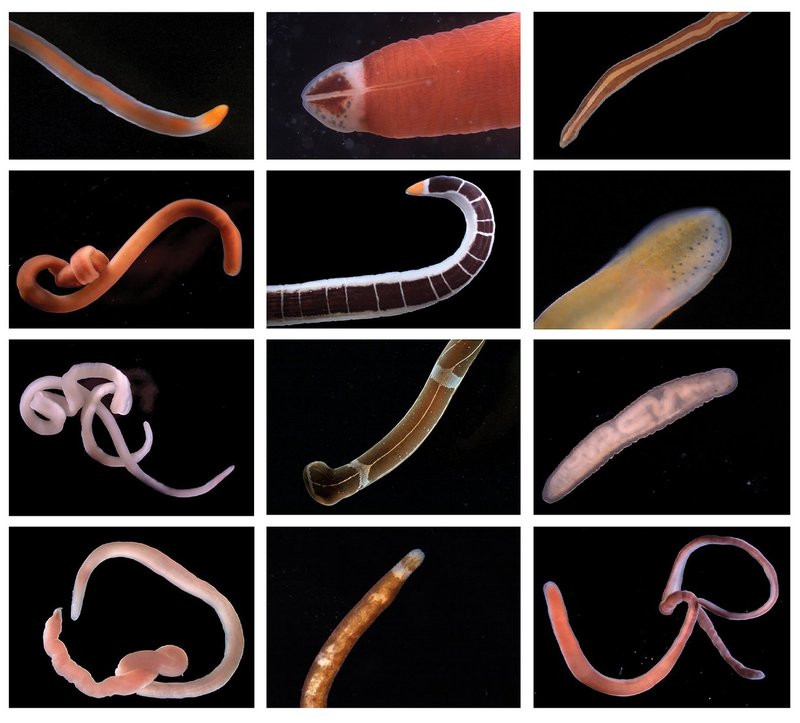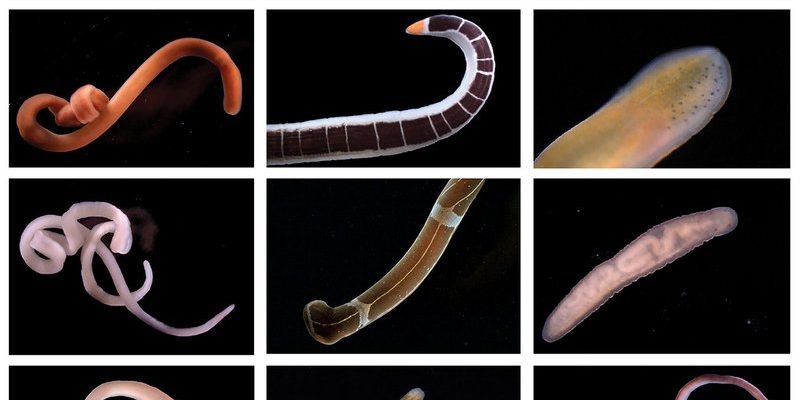
Here’s the thing: marine invertebrate food webs can be a bit complex, so let’s break it down. Ribbon worms, along with other invertebrates, help create a delicate balance. They serve as both predators and prey, affecting everything from microscopic algae to larger fish. In this article, we’ll dive deep into the world of ribbon worms and see how they fit into the larger picture of marine life. Grab a cup of coffee and let’s get started!
Understanding Ribbon Worms
Ribbon worms, or *Nemertea*, are an intriguing group of marine invertebrates characterized by their long, flat bodies. They can range from just a few centimeters to several meters in length, which is pretty impressive for a worm, right? These worms are mostly found in shallow coastal waters, where they like to hide under rocks or in the sand.
What makes ribbon worms stand out is their unique hunting method. They have a specialized organ called a **proboscis** that can shoot out rapidly to capture prey. Think of it like a sticky tongue that catches nearby food, which is usually smaller invertebrates like crustaceans and worms. Once they snag their meal, they reel it back in and gobble it up. This impressive feeding technique allows them to play a significant role in the food web by controlling populations of other small critters.
The Role of Ribbon Worms in the Food Web
Now that we know what ribbon worms are, let’s talk about why they matter. Ribbon worms play a dual role in the marine ecosystem: they are both predators and prey. As predators, they help regulate populations of smaller marine invertebrates. By keeping these populations in check, they ensure that no single species overpopulates and disrupts the delicate balance of the ecosystem.
On the flip side, ribbon worms themselves are food for larger animals, such as fish and sea birds. Their bodies are packed with nutrients, making them a great meal for hungry predators. This dual role is crucial for maintaining biodiversity, which is essential for a healthy marine environment. The more diverse a food web, the more resilient it is to changes, like pollution or climate change.
How the Marine Food Web Works
Picture a giant web, where every strand represents a connection between different species. At the base of this web, we have **producers**, like phytoplankton and seaweed, which convert sunlight into energy through photosynthesis. These tiny plants are the primary food source for herbivores, such as small fish and zooplankton. From there, the food web expands upward through various levels of consumers.
Ribbon worms fit into this web as carnivores. They eat herbivores and other small invertebrates, passing energy up the chain to larger predators. As we climb the food web, we see how each level is interconnected. If ribbon worms were to decline, we could see an overpopulation of their prey, which could then affect their predators. This interconnectedness shows just how vital ribbon worms and other invertebrates are in maintaining the balance of marine ecosystems.
Impact of Human Activity on Ribbon Worms
Here’s a reality check: human activity has a significant impact on marine ecosystems, and ribbon worms are no exception. Factors like **pollution**, habitat destruction, and climate change can disrupt their environment, affecting their populations and, in turn, the entire food web. For instance, runoff from cities often brings pollutants into coastal waters, which can be harmful to delicate marine life, including ribbon worms.
Climate change also plays a role. Rising ocean temperatures and acidification can alter the conditions ribbon worms rely on for survival. As these changes occur, we might see shifts in the food web, leading to unforeseen consequences. So, protecting ribbon worms isn’t just about saving a worm; it’s about preserving the health of the entire marine ecosystem.
Conservation Efforts for Marine Invertebrates
As awareness grows about the importance of marine invertebrates, conservation efforts are becoming more widespread. Organizations and researchers are working tirelessly to study ribbon worms and other invertebrates’ roles in their ecosystems. These initiatives often focus on habitat restoration, pollution reduction, and creating marine protected areas to safeguard critical habitats.
You might be wondering how you can help. Supporting sustainable seafood choices or participating in local clean-up efforts can make a difference. Every small action counts. By fostering a healthier ocean, we help not only ribbon worms but also the entire food web they are part of.
The Future of Ribbon Worms in Marine Ecosystems
So, what does the future hold for ribbon worms in marine ecosystems? Although they are resilient creatures, the ongoing threats they face from human activity and environmental changes make their future uncertain. Monitoring their populations and habitats is crucial for ensuring these fascinating invertebrates continue to thrive.
Innovative research techniques, such as genetic studies and ecological modeling, are also helping us understand ribbon worms better. By uncovering their mysteries, scientists can help develop effective conservation strategies. Honestly, it’s exciting to think about how learning more about these worms can lead to broader insights into marine health.
Ribbon worms may not be the first marine creature that comes to mind, but they are integral to the oceans’ food webs. By understanding their role as both predators and prey, we gain insight into the complex and interconnected nature of marine ecosystems. As we face challenges like pollution and climate change, it’s crucial to protect not just ribbon worms but the entire web of life they help sustain.
Let’s keep the conversation going about the oceans and the creatures that inhabit them. After all, a healthier ocean means a healthier planet for all of us. Whether it’s through personal action or supporting larger conservation efforts, we all have a part to play in preserving these vital ecosystems. So next time you think about the ocean, remember the ribbon worms and how they weave together the fabric of marine life.

